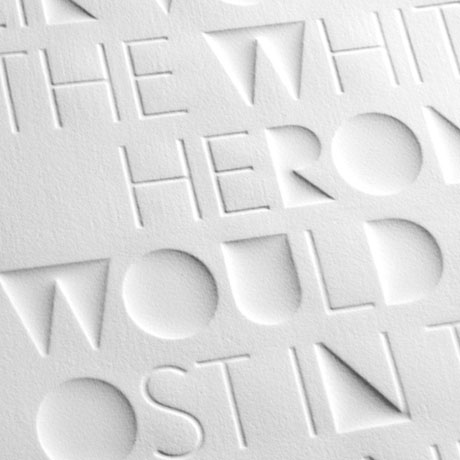
Part One…
Finishing, or Print Finishing, encompasses all processes that occur between printing and shipping. Finishing steps can be broken into three general categories; Binding, Conversion and Decoration. Although Binding is a finishing category, we typically exclude it (collating, saddle stitching, wire-o, etc.) when referring to finishing. Binding is complex enough to deserve it’s own consideration.
What’s left are the decoration and conversion categories. Decorative process typically will enhance the look or feel of a printed product but can also increase durability.
Conversion processes may also enhance the look and feel of a product but the primary purpose of this category is utility. Whether we are laminating for extra durability or index tabbing, conversion makes a printed product more useable.
Decoration
Foil Stamping – Everyone is familiar with gold and silver foil but don’t stop there. There are hundreds of foil colors and sheens to choose from along with options such as clear foil that can enhance a specific area of the printed sheet.
Embossing – Embossing raises an area of the paper giving physical dimension to your product. This is often combined with foil stamping or with the printed image of the sheet to add impact. Another option is to raise an area without print or foil – referred to as a blind emboss – and is most often used to smooth or flatten papers with textured finishes such as linen or laid. Click here for an example of a multi-level blind emboss.
Debossing (image above) – The opposite of embossing, debossing pushes the affected area down instead of up. This process is often combined with die cutting to create a frame around an area that is punched out of the stock. Think of a die-cut window in a book cover that reveals an image on the first page of the book.
Coatings – There are a few different options when it comes to coatings that offer different levels of visual impact, protection and cost. Aqueous, Varnish and UV finishes each will help to protect your image from bumps and scrapes to varying degrees. The following options are listed in the order of additional cost.
- In the case of Aqueous coatings, this is a thin water like coating that is applied in-line during the press run. It is only available as a flood finish, one that covers the entire sheet. It can help tame uneven sheen between heavy and light cover areas of the sheet.
- Varnish coatings are also applied in-line and can flood the sheet and tame sheen like Aqueous coatings. Varnish also offers the option to apply a different sheen to specific areas of the sheet. A hit of spot varnish can subtly enhance your logo or an important image or even a headline.
- UV, or Ultra Violet finishes can be applied in-line like the others but are often done after printing. UV finishes are most commonly used as a spot finish and is applied much thicker than the other two options. The only other finishing option that rivals the glossy reflective finish of spot UV is Clear Foil mentioned above under Foil Stamping. In addition to UV coatings being more expensive than the other options, UV typically requires additional production time.
Conversion
Part two of this post will cover conversion options such as die cutting, lamination and pocket folders.
Our pre-press experts are an indispensable resource available to you on any project. We are only a phone call or an email away: 770-664-8199 / prepress@advancedpf.com.
